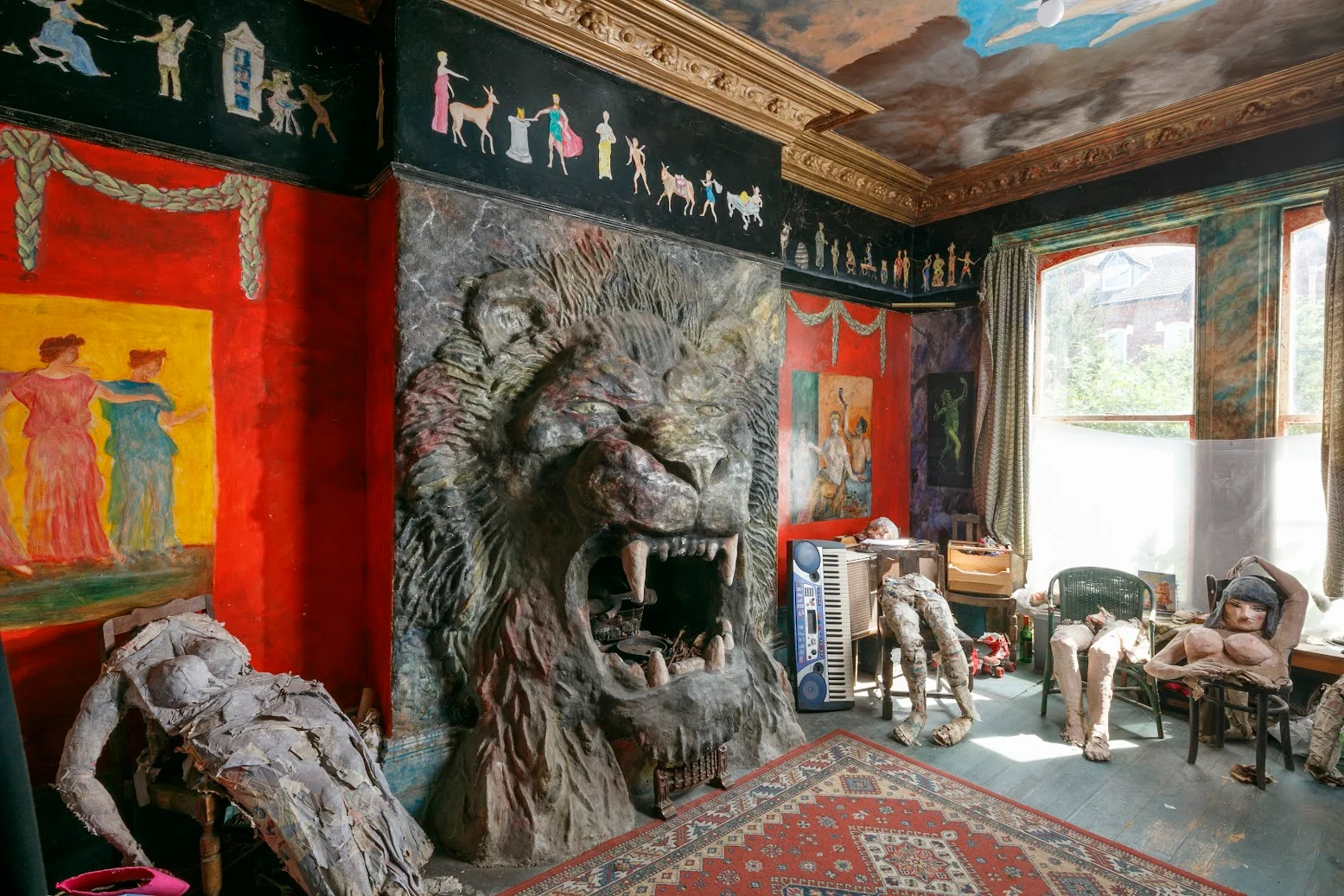
The former residence of outsider artist Ron Gittins in Birkenhead, a town in Merseyside, the U.K., has received Grade II listing by the country’s Department for Culture, Media and Sport, giving it protected status.
From the outside, 8 Silverdale Road—known colloquially as “Ron’s Place”—looks like an ordinary, Victorian-style villa. The interior, however, is a different story. Gittins, a self-employed artist who passed away in 2019, spent more than 30 years transforming his home into what some news outlets have described as a “fantasy world.”
Gittins turned his hallway into an Egyptian temple, complete with hand-painted hieroglyphs, crafted two fireplaces in the shape of a lion’s head and minotaur’s head, respectively, and even installed a Roman bread oven. An outsider artist who never received training from an accredited art institution or associated with anyone in the art world, he built Ron’s Place with skills and knowledge that he acquired himself.
The exterior of Ron’s Place. Photo: Historic England.
The second of three children, Gittins was born in 1939 in downtown Birkenhead. Showing creative promise at an early age, he enrolled at the nearby Laird School of Art but quit before earning his degree. Inspiration for what would become Ron’s Place came from two sources: a visit to the ruins of Pompeii during his youth, which awakened his passion for ancient history, and a lifelong interest in theater, specifically the romantic plays of William Shakespeare.
“Ron always had his own particular vision and tended to work outside the parameters of the official art world,” the official website of Ron’s Place reads. “Although he sometimes undertook portrait commissions, he was more concerned with giving free reign to his imagination resulting in the creation of immersive visionary environments.”
A fireplace in the shape of a minotaur’s head. Photo: Historic England.
While Gittins was widely known in the Birkenhead community for his flamboyant fashion and eccentric behavior—the website reported him “identifying with Roman emperors” and “carrying out frequent renditions of Shakespearean soliloquies”—and received sporadic attention from local media for his commissions, the art he produced inside his own home remained largely unknown until his death in 2019.
Gittins’s contact with the outside world, including loved ones, apparently decreased as he got older. “We always kept in touch but he did have some mental health problems and could create some difficult situations,” a family member explained. “But he didn’t seem to worry if other people sometimes thought he was mad. I think he believed he was ahead of the game somehow and if other people didn’t get it then that was their problem.”
Gittins built a Roman altar in his kitchen. Photo: Historic England.
Buildings in the U.K. are listed for their unique architectural or historic interest, ensuring that any planning works or changes to the building will have to be considered and consented. Ron’s Place’s Grade II status marks it as a building of “more than special interest,” according to Historic England.
The residence’s listing is the result of a long campaign on the part of volunteers to save its contents, particularly after the building was put up for auction in 2023. The space was rescued from feared destruction after benefactors, historian Tamsin Wimhurst and her husband Mike Muller (who previously saved Cambridge’s David Parr House), swooped in to purchase the house in order to preserve it. Campaigners applied to list the building shortly after.
“A small number of people on this planet have known for a while that Ron’s Place is a very Special Place,” Jarvis Cocker, frontman of Pulp, said in a statement, “but from now on, it is official: Ron’s Place has been given listed status! The work of one unique gentleman in the north of England has been recognized nationally. Globally even. Hallelujah!!”